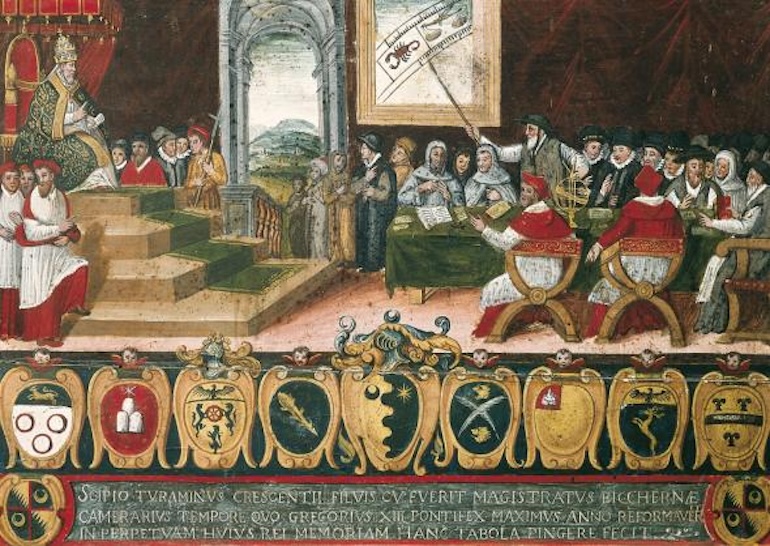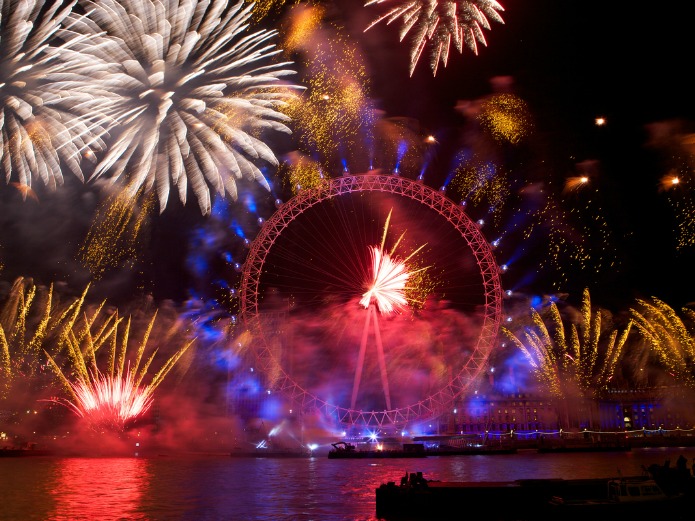Dates on the calendar we normally use have mainly Christian origins. Still, some of them reflect pagan origins, and everything changed in the eighteenth century with the adoption of a new calendar.
Leap Year
2024 was a leap year with an extra day inserted on 29th February. This happens every four years and was instituted in order to reflect the fact that the earth revolves around the sun in 365 and a quarter days, so an extra day is inserted at the end of February in order to keep the everyday calendar in line with the solar year.
However, it is not quite as simple as that. The earth rotates around the sun in just under 365 and a quarter days so the Julian calendar, which was introduced by Julius Caesar, became out of synch with the Gregorian calendar which was introduced in 1582 during the time of Pope Gregory, after whom it was named. This further refines the leap year system so that years divisible by 100 are not leap years unless they are also divisible by 400.
The Gregorian calendar was named after Pope Gregory and adopted by Papal Bull in 1582. However, it was largely the creation of a Jesuit Mathematician called Christopher Clavius, who has been largely forgotten by history because -unlike Gregory – he never rose to the papacy. In Clavius’ system, the years 1500, 1700 and 1800 are not leap years, but 1600 and 2000 are. The more accurate Gregorian calendar reflects the fact that the earth takes just under 365 and a quarter days to rotate around the sun. The gap between the Gregorian and Julian calendars had grown to twelve days when Britain switched to the former system in 1752.
This in turn led to twelve ‘lost’ days which it is said that many people objected to and even demonstrated over. Demands that the twelve ‘lost’ days be restored were supposedly mounted and were infused with the anti-Catholic sentiment widespread in Britain at the time. In practice, most people accepted the change to the new more accurate calendar and the extent of demonstrations was almost certainly exaggerated for comic effect.
 Scipio-Turaminus Gregorian calendar 1582. Photo Credit: © Public Domain via Wikimedia Commons.
Scipio-Turaminus Gregorian calendar 1582. Photo Credit: © Public Domain via Wikimedia Commons.
Calculating the date of Easter
The change to the Gregorian calendar from the Julian calendar had an effect on the calculation of Easter. In a curious mixture of lunar and solar calendars Easter Sunday falls on the first Sunday after the first full moon following the spring equinox (20th March). This means that Easter is not on a fixed date but can vary from late March (which it has been in 2024) to late April. The earliest Easter Sunday date is 22nd March, the latest 25th April. In medieval times different calculations resulted in Easter being celebrated on different dates – sometimes in the same royal court when a British monarch married into a foreign family.
Easter is preceded by Lent, a six and a half week period during which people traditionally practice restraint and give up luxuries. Even those who are not devout may give up something they enjoy, such as alcohol or chocolate. Lent itself begins when the items that are to be given up are consumed in a pre-Lenten feast. Hence the cooking of pancakes on Shrove Tuesday, the usual pancake night. In some societies a whole period of festivities precedes Lent. This gives rise to carnivals known as Mardi Gras (literally ‘fat Tuesday’) when people let their hair down and enjoy partying before the restraints of Lent come into force.
 The Crucifixion at Victoria & Albert Museum in London. Photo Credit: © Ursula Petula Barzey.
The Crucifixion at Victoria & Albert Museum in London. Photo Credit: © Ursula Petula Barzey.
Mothering Sunday and Mother’s Day
Halfway through Lent it was traditional for British people to take a break from abstinence and to visit their mother church. Gradually, this led to the celebration of Mother’s Day in the United Kingdom on what is sometimes called Laetere Sunday (literally, ‘rejoice Sunday’). Weddings, which were normally not celebrated during Lent, could be held on this day and many people in domestic service took the opportunity to visit their birth mothers as well as their mother churches in which they had been baptised. They would often take a cake with them and this Sunday gradually became the day when homage was paid to British mothers.
In the USA (and many other countries now) Mother’s Day has been celebrated in May since 1907 when the Methodist Anna Jarvis first introduced it in her church in West Virginia. Mothers from America who come to Britain in Lent may be surprised when they are wished ‘Happy Mother’s Day!’ as they will not be celebrating the festival for another month or two.
 ouple enjoy flowerbeds in London’s Hyde Park.
ouple enjoy flowerbeds in London’s Hyde Park.
New Year – and the arrival of tax returns
The most famous mother of all was the Virgin Mary, the mother of Christ. The Angel Gabriel is said to have told her that she would bear a son called Jesus on what Christians term Annunciation Day, 25th March (nine months before Christmas). This date was once regarded as New Year’s Day and, although the annunciation is often the subject of religious paintings seen in churches and art galleries, its celebration as New Year has fallen into disuse. The change to the modern New Year began with the adoption of the Gregorian calendar in 1752.
New Year is now celebrated just after Christmas on 31st December. This is a time when many Londoners and visitors congregate near Big Ben to hear the old year end and the new one begin with the chiming of the bell behind Britain’s most famous clock. The party now includes a fireworks display that costs about two million pounds and is paid for by the sale of 100,000 tickets. These usually cost £20 and are always sold out well in advance to see one of London’s most colourful events which is also broadcast live on television.
The annunciation is now a purely religious event but it contains one unusual secular relic. The annunciation took place on 25th March and, with the adoption of the Gregorian system of calculating dates, twelve days were added to this date to move it to 5th April. This is now the start of the tax year in the UK and self-employed people can expect to receive their tax return soon afterwards. This includes Blue Badge Guides, most of whom are freelancers.
 London New Year’s Eve Fireworks. Photo Credit: © Visit London.
London New Year’s Eve Fireworks. Photo Credit: © Visit London.
Pagan Possibilities
It is sometimes pointed out that Christian festivities occur at similar times to pagan ones. Easter falls at roughly the same time as the pagan festival of Ostara or Eostre, from which the word comes. It was a pagan festival of rebirth and renewal – hence Easter eggs and the Easter Bunny which have very little Christian symbolism but are now almost universal.
In a similar way, Christmas occurs in the depths of winter soon after the winter solstice, the shortest day of the year on 21st December. It is preceded by Advent, which lasts for four weeks, and is followed by twelve days of celebration which last until Twelfth Night (6th January). This is followed by epiphany when the Three Wise Men offered gifts to Jesus.
The days we celebrate are often related to religious events, particularly the birth of Christ (Christmas) or his death (Easter), but they have origins that have continued for centuries.







Leave a Reply